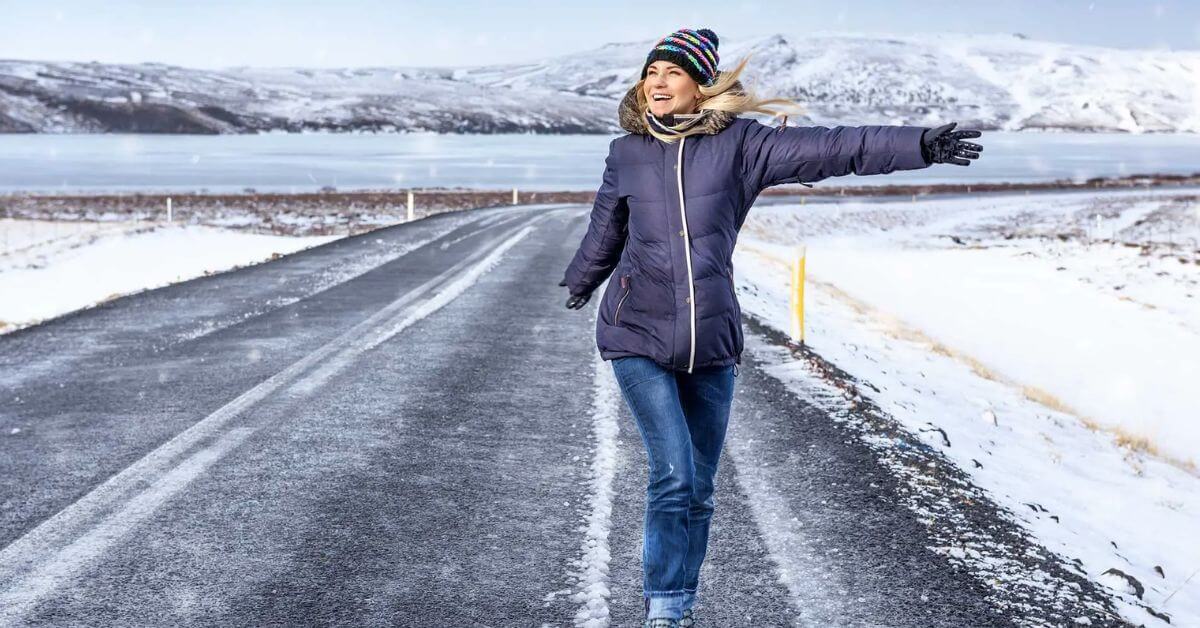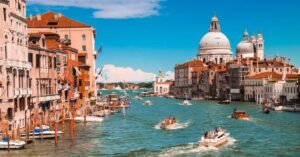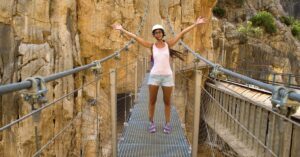Ever stood at the edge of a glacier while the midnight sun painted the sky in surreal hues? Or maybe you've imagined soaking in geothermal pools with snowflakes melting against your warm skin? Iceland isn't just a destination it's Mother Nature showing off at her boldest.
I'll break down exactly when to book your flights to align with the Best Time to Travel to Iceland, whether that's chasing the Northern Lights or hiking volcanic landscapes when the crowds thin out. The Best Time to Travel to Iceland depends on what you're after and the best part? You'll discover those hidden adventure spots that Instagram made famous but didn’t reveal how to actually reach (hint: one involves a plane wreck on a black sand beach).
But wait until you hear about the secret thermal river that locals don’t want you to find, which makes the Blue Lagoon look like a community pool.
Understanding Iceland's Seasonal Highlights
A. Summer's Midnight Sun (May-August): Perfect for Extended Exploration
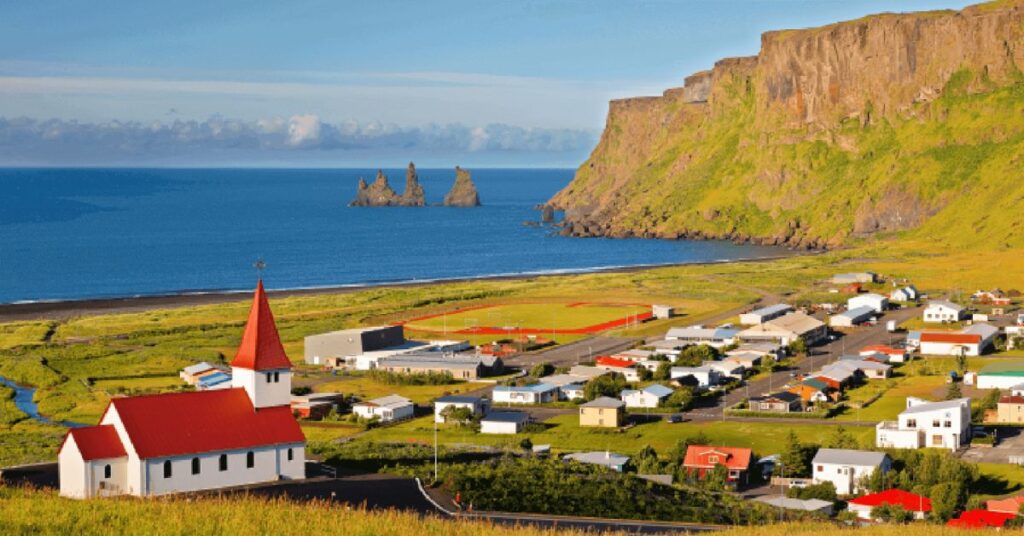
The magic of Iceland in summer? You can literally chase adventures around the clock. With daylight stretching for up to 24 hours in June and July, you're getting the ultimate bang for your vacation buck. Picture yourself hiking at midnight with the sun still painting the sky in golden hues that’s not fantasy, that’s your Iceland summer reality. The Best Time to Travel to Iceland for long, adventure-filled days is definitely summer.
Summer brings temperatures that hover between 50–60°F (10–15°C), which might not sound beach-worthy, but trust me, it's practically tropical for Iceland. You'll only need a light jacket most days, making outdoor activities a breeze. It's also widely considered the Best Time to Travel to Iceland for comfortable weather and maximum daylight.
This season opens up parts of Iceland that remain inaccessible during winter months. The highland roads (F-roads) finally open, unveiling Landmannalaugar’s rainbow mountains and Þórsmörk’s lush valleys. The puffins also show up for their annual summer residency, adding an extra dose of adorable to your coastal adventures. If you're seeking nature at its peak, this is the Best Time to Travel to Iceland.
B. Winter's Northern Lights Spectacle (September-March)
Winter in Iceland isn't just cold – it's cosmic. The dark skies create the perfect canvas for the Northern Lights to dance across the heavens. Pack your warmest clothes because temperatures typically range from 14°F to 36°F (-10°C to 2°C), but witnessing those emerald and violet auroras makes every shiver worthwhile. For many, this is truly the Best Time to Travel to Iceland if magical skies are on your bucket list.
The winter landscape transforms into a snow-covered wonderland that looks straight out of a fantasy novel. Ice caves beneath massive glaciers become accessible only during these frozen months, revealing chambers of crystal-blue ice that will leave you speechless – another reason why winter is often considered the Best Time to Travel to Iceland.
While winter days are short, sometimes offering only 4–5 hours of daylight, this allows for experiences that summer simply can't deliver. Picture soaking in geothermal hot springs under starry skies or marveling at frozen waterfalls glistening in soft light. For those seeking a surreal and peaceful adventure, winter may just be the Best Time to Travel to Iceland.
C. Spring's Awakening Landscape (April-May)
Spring isn't just a season in Iceland it's a dramatic transformation unfolding before your eyes. The island shakes off its winter blanket, with waterfalls like Skógafoss and Dettifoss swelling to their most powerful as glacial melt accelerates. For many, this is the Best Time to Travel to Iceland if you're seeking thundering natural spectacles and fewer crowds.
The weather? “Unpredictable” is putting it mildly. You might experience sunshine, rain, sleet, and snow all in a single afternoon. But that’s part of what makes this season thrilling. Pack layers and embrace the changeability it’s what makes spring the Best Time to Travel to Iceland for those craving dynamic conditions and raw nature in flux.
What makes spring truly special is watching Iceland come alive. Migrating birds return, adding a symphony of calls to coastal cliffs. The first wildflowers dot the volcanic terrain, and with daylight stretching 13 to 16 hours, it’s the Best Time to Travel to Iceland for those wanting long days to explore a landscape waking from hibernation.
D. Fall's Colorful Transformation (September-October)
Fall in Iceland delivers visual drama that few travelers get to experience. The tundra vegetation transforms into a tapestry of reds, oranges, and golds that creates stunning contrast against black lava fields and blue glaciers. This color show typically peaks in late September, making it the Best Time to Travel to Iceland for photographers seeking vibrant autumn scenery without the summer crowds.
The first dustings of snow on mountain peaks while lower elevations remain accessible create a “best of both worlds” scenario. You can still traverse most roads while enjoying a winter preview another reason this season is often considered the Best Time to Travel to Iceland.
Weather-wise, expect temperatures between 37–50°F (3–10°C) with increasing precipitation as winter approaches. Wind becomes a more frequent companion, adding atmospheric moodiness to your landscape photos and reinforcing why autumn might just be the Best Time to Travel to Iceland for dramatic and diverse experiences.
E. Shoulder Season Benefits: Fewer Crowds and Better Deals
Timing is everything when visiting Iceland, and shoulder seasons (May and September) might just be your secret weapon. Many consider them the Best Time to Travel to Iceland thanks to fewer crowds and budget-friendly prices. Hotels can drop 30–40% below peak summer rates, rental cars are more affordable, and you won't need to book restaurants weeks in advance.
The most profound difference? Experiencing iconic spots like Gullfoss or Seljalandsfoss without weaving through tour groups and selfie sticks. For travellers seeking serenity, this could be the Best Time to Travel to Iceland offering personal moments at places that typically see thousands daily.
The weather during these transitional months is unpredictable, so come prepared for sudden shifts and strong winds. But with that comes dramatic light shows rainbows over waterfalls, and moody clouds over lava fields, making it the Best Time to travel to Iceland for photographers and adventure seekers alike.
Weather Considerations for Your Icelandic Adventure
A. Temperature Ranges Throughout the Year
Planning your Icelandic adventure? Temperature should be at the top of your considerations. Iceland isn't actually as frigid as its name suggests, thanks to the warming Gulf Stream. But you'll still need to pack those layers to match the Best Time to Travel to Iceland based on your comfort with the cold.
Summer (June–August) brings mild temperatures ranging from 50–59°F (10–15°C). It's the Best Time to Travel to Iceland for those who enjoy extended daylight, outdoor adventures, and relatively warm conditions. The occasional day might even hit 68°F (20°C) practically tropical by Icelandic standards!
Winter (November–March) transforms the country into a wonderland of frost, with temperatures typically hovering between 28–32°F (-2–0°C). Reykjavík and coastal areas stay milder than the highlands, where temps can plunge to 14°F (-10°C) or lower. If seeing the Northern Lights is on your list, this might be the Best Time to Travel to Iceland for you.
Spring (April–May) and fall (September–October) offer average temperatures of 37–45°F (3–7°C), ideal for travelers seeking fewer crowds while still enjoying manageable weather.
B. Rainfall Patterns and How They Affect Travel
“Pack for rain” isn't just casual advice in Iceland it's practically a survival tip. The country's precipitation patterns can make or break your adventure plans. Knowing the Best Time to Travel to Iceland helps you prepare for whatever the skies may throw at you.
Southern Iceland gets drenched with up to 118 inches (3,000mm) of annual rainfall, while the north stays relatively drier at 20 inches (500mm). October through February bring the wettest conditions, so this may not be the Best Time to Travel to Iceland if you're hoping for clear views and dry hikes.
What does this mean for your trip? Rain can transform hiking trails into muddy challenges and reduce visibility at scenic spots. Those Instagram-worthy waterfall photos might include you looking like a drowned rat (though that’s part of the authentic experience!). Even during the Best Time to Travel to Iceland, expect quick weather shifts and pack smart waterproof gear is always a good idea.
C. Daylight Hours: Dramatic Seasonal Variations
Iceland's daylight situation is nothing short of extreme. Your summer adventure grants you the midnight sun phenomenon nearly 24 hours of daylight from mid-May through July. Imagine hiking at midnight under a bright sky or chasing waterfalls at 2 AM! The Best Time to Travel to Iceland for these unique experiences is definitely summer, when the sun barely dips below the horizon.
Winter flips the script entirely. December visitors get just 4–5 hours of daylight, with the sun lazily rising around 11 AM and setting by 3:30 PM. If the Northern Lights are on your bucket list, winter may be the Best Time to travel to Iceland, offering long nights ideal for celestial viewing.
The shoulder seasons offer more balanced daylight hours:
| Month | Daylight Hours |
|---|---|
| March | 10-13 hours |
| April | 13-16 hours |
| September | 13-11 hours |
| October | 11-8 hours |
These rapid changes affect your sleep patterns too pack a sleep mask in summer and prepare for cozy, dark mornings in winter.
D. Road Conditions and Accessibility by Season
Your Icelandic road trip dreams hinge entirely on the season you choose. The Best Time to Travel to Iceland for a full-circle driving adventure is summer, which delivers the most accessible conditions. Most highland F-roads (mountain roads) open from late June to early September, giving you rare access to remote gems like Landmannalaugar or Þórsmörk.
Winter driving is a completely different game. Many highland roads close entirely, and even main roads can become treacherous after snowstorms. The Ring Road stays mostly accessible, but you’ll absolutely need a 4WD vehicle with winter tires. Ice, snow, and violent windstorms called “horizontally-traveling-snow” can shut down portions of roads with little warning, which is why planning around the Best Time to Travel to Iceland is so important for safety and flexibility.
Spring brings thawing conditions and potential flooding, while fall sees the first snow returning to highland areas. These shoulder seasons often feature rapidly changing road conditions, a clear morning drive could become a snowy afternoon challenge. For flexible adventurers, they might just offer the Best Time to travel to Iceland thanks to fewer crowds and dramatic scenery shifts.
Always check road.is before heading out it’s your lifeline for real-time Icelandic road updates.
The Ultimate Top 10 Adventure Destinations in Iceland
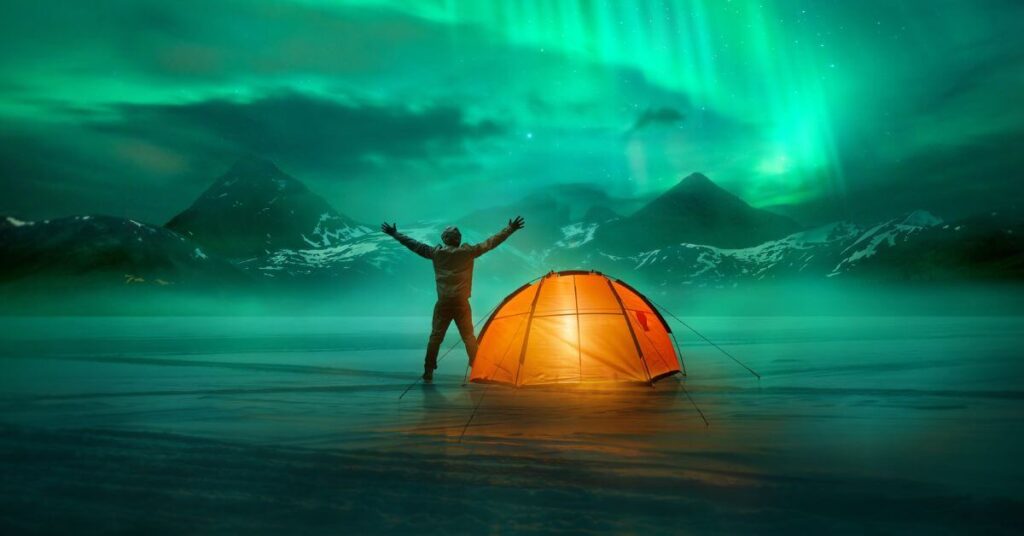
The Golden Circle: Iceland's Most Famous Route
Picture this: you're driving through a landscape that looks like it's straight out of a sci-fi movie. That's what awaits you on the Golden Circle. This 300km loop from Reykjavík packs Iceland's most jaw-dropping sights into one day trip.
Start at Þingvellir (Thingvellir), then hit Geysir geothermal area where Strokkur shoots water 30 meters into the air every 5-10 minutes. (Trust me, you'll want your camera ready.) Cap it off with the thundering Gullfoss waterfall, where rainbows dance in the mist on sunny days.
Pro tip: Rent a car and do this route early morning or late evening in summer to dodge the tour buses. Your photos will thank you.
Vatnajökull National Park: Europe's Largest Glacier
When someone asks what it feels like to stand on a glacier, you’ll have the answer after visiting Vatnajökull. Covering 8% of Iceland, this massive ice cap is a playground for adventure seekers and a top highlight during the Best Time to Travel to Iceland.
Book a glacier hike with crampons and ice axes to crunch across blue ice formations that shift and reshape constantly. Or explore the breathtaking ice caves between November and March those glowing blue chambers might be the closest thing to walking inside a sapphire, and they’re only accessible during the Best Time to Travel to Iceland for winter adventurers.
But it’s not all ice. The park features volcanic terrain, black sand plains, and lush valleys. In the Skaftafell area, you’ll find accessible hiking trails with views so stunning, your Instagram followers might think they’re photoshopped.
Blue Lagoon: Geothermal Wonder
You’ve seen it on every Iceland travel brochure, and yes, the Blue Lagoon lives up to the hype. This milky-blue geothermal spa set in a black lava field is one of the most iconic experiences and a must-see during the Best Time to Travel to Iceland.
Sink into the 38°C (100°F) mineral-rich waters and feel your travel stress melt away. Slather on the signature silica mud mask (it’s free with entry), and you’ll emerge with baby-soft skin.
Want to avoid crowds? Book the first slot in the morning or visit during dinner time when most tourists have left timing your visit smartly can make all the difference in experiencing the Best Time to Travel to Iceland.
Jökulsárlón Glacier Lagoon: Floating Icebergs
Nothing prepares you for that first glimpse of Jökulsárlón icebergs in striking shades of blue and white floating silently in a lagoon like nature’s own art installation. These massive chunks break off from the Breiðamerkurjökull glacier and drift slowly toward the Atlantic Ocean, making it a must-see during the Best Time to Travel to Iceland for dramatic, unforgettable scenery.
Take an amphibian boat tour weaving between the bergs or splurge on a zodiac boat for a more intimate adventure. Just across the road, Diamond Beach sparkles with ice chunks washed ashore, glittering against the black sand a dream setting for photographers, especially at sunrise or sunset during the Best Time to Travel to Iceland for golden hour perfection.
Wildlife bonus: Keep an eye out for seals bobbing between the icebergs. These curious creatures often surface to check out visitors, adding a playful surprise to an already surreal experience.
Thingvellir National Park: Where Continents Divide
Walk between North America and Europe literally. At Thingvellir, you can place one foot in each continent as you stroll through the rift valley where the tectonic plates are pulling apart at about 2cm per year.
Beyond the geological wonder, you're standing in Iceland's most historically significant site. The world's first parliament, the Althing, was established here in 930 AD. Take a moment at Öxarárfoss waterfall to ponder the Viking chieftains who once debated laws on these very grounds.
For an unforgettable experience, book a snorkeling tour in the Silfra fissure. The visibility in this crack between continents exceeds 100 meters, and the water is some of the purest you'll ever swim in filtered through lava rock for decades. The Best Time to travel to Iceland for Silfra snorkeling is during the summer months when temperatures are milder and daylight hours are long, making the cold water feel just a bit more bearable.
Hidden Gems Beyond the Tourist Trail
The Westfjords: Untamed Wilderness Experience
Ever felt like you’re the only traveler in the most beautiful place on Earth? That’s the Westfjords in a nutshell. This remote peninsula is where Iceland gets truly wild think dramatic cliffs, cascading waterfalls, and fjords so pristine you’ll wonder if anyone’s ever been there before you. If you’re craving raw, untouched nature, this is easily one of the most rewarding regions to explore during the Best Time to Travel to Iceland.
When you visit Dynjandi waterfall, you’re not just seeing another Icelandic cascade you’re witnessing a seven-tiered natural masterpiece that thunders down 100 meters, widening as it falls. Few tourists make it this far, so you can often stand at its base with just the mist and magic for company.
Red sand beaches? Absolutely Rauðasandur offers a rare break from the black sand crowds. The crimson shoreline shifts in color throughout the day, making it a photographer’s dream.
Need to unwind? The natural hot pot at Hellulaug sits on the edge of a fjord. Soak in 38°C water while gazing out over surreal coastal views an unforgettable way to experience the Best Time to Travel to Iceland, far from the usual tourist trails.
Húsavík: Whale Watching Capital of Europe
Forget the packed whale watching tours leaving Reykjavík Húsavík is where the real action happens. This charming fishing village on Iceland’s northern coast offers whale encounters so close they’ll leave you breathless, especially if you visit during the Best Time to Travel to Iceland for marine life.
Board a traditional wooden boat in Skjálfandi Bay, and you’re almost guaranteed to spot humpbacks, minkes, and maybe even the massive blue whale if you're lucky. The success rate here hovers around 98% those are odds worth betting on.
What makes Húsavík special? The deep waters of the bay provide ideal feeding grounds, and the town’s focus on responsible tourism ensures the whales are respected, not disturbed. Your guides aren’t just boat captains they’re marine biologists and conservationists who help you truly appreciate these magnificent animals.
After your ocean adventure, warm up at the GeoSea baths. These infinity-edge geothermal pools perch on cliffs overlooking the same bay where you just spotted whales. For nature lovers, this coastal gem is a highlight during the Best Time to Travel to Iceland.
Landmannalaugar: Colorful Rhyolite Mountains
Picture mountains painted in shades of red, yellow, green, and blue. No, it’s not a child’s drawing it’s Landmannalaugar, and it’s absolutely real. This highland area showcases Iceland’s geological wonders in technicolor, and it’s one of the top places to explore during the Best Time to Travel to Iceland for hikers and nature lovers.
Hiking here feels like walking through an artist’s palette. The Brennisteinsalda trail (aka the “Sulphur Wave”) takes you across neon green moss fields, past steaming vents, and up to viewpoints that’ll make you question if you’re still on Earth.
Want the ultimate experience? Bring your swimsuit and trek to the natural hot river. After a long day of hiking, sliding into those warm waters while surrounded by rainbow mountains is basically heaven on earth. The contrast of hot water and cool air creates wisps of steam that add to the otherworldly vibe.
The best part? Despite its surreal beauty, Landmannalaugar stays relatively quiet compared to Iceland’s more famous southern spots. If you're aiming to avoid the crowds and embrace pure wilderness, this is easily one of the hidden gems during the Best Time to Travel to Iceland.
Askja Caldera: Lunar-Like Landscapes
Did you know NASA sent Apollo astronauts to train in Iceland before heading to the moon? One look at Askja and you’ll understand why. This massive volcanic caldera in the central highlands feels more extraterrestrial than earthly, and many believe it's one of the highlights during the Best Time to Travel to Iceland for remote exploration.
The journey to reach Askja is an adventure in itself. You’ll cross unbridged rivers and navigate rough mountain roads that cut through black sand deserts. When you finally arrive, the sight of the milky-blue Víti crater lake will stop you in your tracks.
Feeling brave? Take a dip in Víti’s geothermally heated waters. The water hovers around 30°C, creating an eerie swimming experience as steam rises around you. Just be prepared for the sulfur smell it’s all part of the package when you’re bathing in a volcanic crater.
The surrounding moonscape of Ódáðahraun lava field stretches endlessly, making you feel like you’ve landed on another planet with no tourist buses in sight. For those who want solitude and surreal beauty, this is Iceland at its most raw and powerful, and easily one of the most unforgettable spots during the Best Time to Travel to Iceland.
Also Read: Travel & Safety Guide for Iceland: First-Timers in 2025
Seasonal Adventure Activities
A. Summer Hiking on Iceland's Premier Trails
Ever wondered what it feels like to hike under the midnight sun? During Iceland's summer months (June-August), often considered the Best Time to Travel to Iceland, you'll experience nearly 24 hours of daylight ideal for exploring some of the most breathtaking hiking trails in the world.
The Laugavegur Trail is a must during the Best Time to Travel to Iceland. This 55km route winds through rainbow-colored rhyolite mountains, black sand deserts, and steaming hot springs. It’s a visual feast you’ll want to capture at every turn.
For a shorter option, head to Þórsmörk valley for day hikes that reveal glaciers, rivers, and lush landscapes. And don’t forget Landmannalaugar’s multicolored peaks and natural hot pools a hiker’s reward, especially during the Best Time to Travel to Iceland.
B. Winter Ice Cave Explorations
Ice caves in Iceland are like stepping into another dimension. These magical blue caverns only form during winter (November–March), which is widely considered the Best Time to Travel to Iceland if you want to witness these frozen wonders. The Vatnajökull glacier hosts the most famous ice caves, where you'll feel tiny walking through cathedral-like chambers of compressed ice glowing in surreal shades of blue.
Visiting during the Best Time to travel to Iceland ensures the caves are safely accessible and structurally sound. Always book a guided tour, these formations can be dangerous without expert supervision. Your guide will not only provide safety gear but also share stories that bring these glacial marvels to life.
So, if you're chasing otherworldly beauty and unforgettable adventure, remember: winter is the Best Time to Travel to Iceland for ice cave exploration.
C. Year-Round Waterfall Chasing
Iceland isn't called the land of fire and ice for nothing it's also the land of countless waterfalls! The best part? You can chase these magnificent cascades any time of year.
Skógafoss and Seljalandsfoss along the south coast are must-visits. At Seljalandsfoss, you can actually walk behind the waterfall for a unique perspective (bring a raincoat!). During winter, these falls sometimes freeze partially, creating surreal ice sculptures.
Dettifoss, Europe's most powerful waterfall, will make your jaw drop with its sheer force. The mist creates rainbows on sunny days, while in winter, the surrounding landscape transforms into a frozen wonderland.
Gullfoss, part of the Golden Circle route, offers different experiences each season powerful flows in summer and dramatic ice formations in winter.
D. Glacier Climbing and Ice Walking Opportunities
Ready for an adrenaline rush? Glacier hiking in Iceland gives you that perfect mix of adventure and otherworldly beauty.
Sólheimajökull glacier on the south coast is accessible year-round and perfect for beginners. You'll crunch across ancient ice, peer into deep blue crevasses, and learn about these massive ice formations from expert guides.
For a more challenging experience, the outlet glaciers of Vatnajökull offer technical climbs and exploration of ice formations. During summer, the surface is more stable, while winter brings unique ice sculptures and caves.
All glacier activities require guides and specialized equipment, which are provided on organized tours. You'll be fitted with crampons, helmets, and ice axes before heading out onto the ancient ice.
E. Seasonal Hot Spring Bathing Experiences
Nothing beats ending an adventure-filled day by soaking in Iceland’s geothermal waters. These hot springs offer different experiences depending on the season, which is why understanding the Best Time to Travel to Iceland can shape your entire itinerary.
The Blue Lagoon is famous for a reason the milky blue waters set against black lava fields create an unforgettable, otherworldly atmosphere. In summer, soak under the glow of the midnight sun; in winter, it's a front-row seat to the Northern Lights. Many visitors consider this dual-season experience as the Best Time to Travel to Iceland for magical spa moments.
For a more natural escape, hike to Reykjadalur Steam Valley, where a hot river winds through the hills. Find the perfect spot where hot and cold currents meet for your ideal temperature yet another reason why spring and early autumn are contenders for the Best Time to Travel to Iceland.
Prefer something rustic? The Secret Lagoon in Flúðir is a peaceful alternative to the Blue Lagoon, with bubbling hot springs and a nearby geyser that erupts every few minutes. In winter, steam rises through falling snow, creating a dreamlike setting you’ll never forget.
Planning Your Itinerary by Season
A. One-Week Summer Adventure Route
Summer in Iceland means endless daylight and mild temperatures – your chance to pack in as much adventure as possible. Start your journey in Reykjavík, spending a day exploring the colorful capital before hitting the road.
Days 1-2: Drive the Golden Circle, hitting Þingvellir National Park, the explosive Geysir geothermal area, and thunderous Gullfoss waterfall. Spend your second night near Vík, where you can explore black sand beaches and basalt columns at Reynisfjara.
Days 3-4: Continue east along the Ring Road to Jökulsárlón Glacier Lagoon. Watch massive icebergs calve from Vatnajökull glacier and drift out to sea. Don't miss a boat tour here – you'll get close enough to touch the ancient ice!
Days 5-6: Head north to Lake Mývatn's otherworldly landscapes. Soak in the Nature Baths (less crowded than the Blue Lagoon), hike through lava formations, and marvel at Dettifoss, Europe's most powerful waterfall.
Day 7: Loop back to Reykjavík via the Snæfellsnes Peninsula, often called “Iceland in miniature.” Catch the iconic Kirkjufell mountain before returning your rental car.
Pro tip: Book accommodations at least 3 months ahead for summer travel. Prices skyrocket and availability vanishes as your trip approaches.
B. Winter Northern Lights Expedition
Winter transforms Iceland into a magical snow-covered landscape where darkness reigns – perfect for catching the elusive aurora borealis. The key? Flexibility and patience.
Base yourself in Reykjavík for 3-4 days, booking a rental car with 4WD capability. During daylight hours (roughly 10am-4pm), explore nearby attractions:
- Blue Lagoon's steaming waters contrast beautifully with snow
- Snorkel between tectonic plates at Silfra (surprisingly comfortable in dry suits!)
- Tour ice caves under Vatnajökull glacier (only accessible in winter)
Each evening, check the aurora forecast (scale of 0-9) and cloud cover maps. When conditions look promising (rating 3+), drive away from city lights to these prime viewing spots:
- Þingvellir National Park (40 minutes from Reykjavík)
- Seljavallalaug hot spring (2 hours south)
- Kirkjufell mountain (2.5 hours north)
Pack these essentials: thermal layers, hand warmers, thermos with hot drinks, tripod for photos, and headlamp with red light option to preserve night vision.
Remember: Iceland's winter roads can close without warning. Always check road conditions at road.is before driving, and have backup plans ready.
C. Spring Wildlife Viewing Opportunities
Spring (April–May) is considered by many wildlife lovers as the Best Time to Travel to Iceland. The crowds haven’t yet arrived, prices remain reasonable, and animals begin to emerge from winter’s grip. You’ll find yourself enjoying spectacular wildlife viewing with just a handful of other nature enthusiasts.
Head to the Westfjords to experience one of Europe’s greatest bird spectacles. The towering cliffs at Látrabjarg become home to millions of nesting seabirds, including adorable puffins that return from sea in late April. Getting close to these curious creatures is one of the hidden perks of choosing the Best Time to Travel to Iceland.
For whale watching, book a tour from Húsavík, Iceland’s whale capital. Spring brings hungry humpbacks, minkes, and even blue whales into these nutrient-rich waters. With a 95%+ success rate in May and fewer tourists, you'll enjoy a more personal and breathtaking experience another reason this season ranks as the Best Time to Travel to Iceland for wildlife adventures.
Looking for Arctic foxes? Explore Hornstrandir Nature Reserve, where these elusive predators trade their white winter coats for summer brown. Their playful movements along the cliffs make for rare and unforgettable photos.
Your spring wildlife packing essentials:
- Binoculars (8×42 recommended)
- Wind/waterproof outer layers
- Camera with telephoto lens
- Field guide to Icelandic wildlife
D. Fall Photography Journey
Fall transforms Iceland into a photographer's paradise with dramatic lighting, thinner crowds, and landscapes painted in amber and crimson. The sweet spot? Mid-September to early October.
The Highlands access roads remain open (weather permitting), giving you entry to Iceland's most photogenic locations. Landmannalaugar's rhyolite mountains burst with color against darkening skies, creating contrast that summer's midnight sun can't match.
Schedule your shooting around these golden hour opportunities:
- Sunrise at Vestrahorn (around 7am): Capture mountain reflections in wet black sand
- Mid-morning at Skógafoss: Rainbow-catching mist as sunlight hits the waterfall
- Sunset at Kirkjufell (around 6:30pm): Classic composition with fall colors in foreground
Timing tip: The sun hovers near the horizon longer in fall, extending golden hour to almost an hour rather than summer's brief 20 minutes.
Don't overlook autumn's unique photo opportunities: sheep roundups (réttir), northern lights beginning to appear, and wild berry picking that adds human elements to landscape shots.
Weather changes quickly this time of year. Pack microfiber cloths for lens cleaning, rain covers for equipment, and fingerless gloves that let you adjust camera settings while keeping warm.
Practical Travel Tips for Iceland
A. Packing Essentials for Each Season
Don't make the rookie mistake of packing light for Iceland regardless of when you visit. The weather here plays by its own rules. Here's what you need to pack by season:
Summer (June-August):
- Waterproof jacket and pants (rain will find you)
- Layers! T-shirts, light sweaters, and a warm jacket
- Hiking boots with ankle support
- Swimsuit (for those heavenly hot springs)
- Sleep mask (the midnight sun is real!)
- Sunglasses and sunscreen (yes, even in Iceland)
Winter (November-March):
- Serious thermal underwear the kind that actually works
- Waterproof and windproof outerwear
- Insulated boots with good grip
- Hand/foot warmers (your future self will thank you)
- Crampons for icy conditions
- Headlamp (with darkness lasting 19+ hours)
Spring/Fall:
- All of the above (seriously)
- Extra layers to add/remove as temperatures swing wildly
No matter when you visit, pack a reusable water bottle (tap water in Iceland is amazing) and a power adapter with USB ports.
B. Transportation Options and Rental Car Advice
Getting around Iceland requires some planning, but the freedom is worth it.
Rental Car Tips:
- Book early prices skyrocket in summer and vehicles sell out
- Get a 4×4 if visiting between October-April or planning on F-roads
- Decline the GPS and use offline maps instead (save $10-15/day)
- Take photos of EVERY scratch before leaving the lot
- Consider gravel protection insurance those roads will test your vehicle
Other Transportation Options:
| Option | Pros | Cons |
|---|---|---|
| Bus Passport | Affordable, stress-free | Limited schedule, less flexibility |
| Guided Tours | No planning needed, expert info | Pricey, fixed itineraries |
| Campervan | Accommodation + transport in one | Expensive in summer, parking limitations |
Pro tip: Gas stations in remote areas often close early, so fill up whenever you're below half a tank. Your credit card might need a PIN for unattended stations.
C. Accommodation Recommendations by Region
Your accommodation strategy should change depending on which part of Iceland you're exploring:
Reykjavik Area:
- Splurge on a central location to save on transport costs
- Check out Fosshotel Reykjavik for mid-range comfort
- Budget travelers: Try Kex Hostel or an Airbnb in the 101 district
South Coast:
- Book WAY ahead for spots near Vik or Höfn
- Hotel Katla offers great Northern Lights viewing
- Farm stays provide authentic experiences at reasonable prices
Golden Circle:
- Heradsskolinn Hostel offers character and central location
- Frost and Fire Hotel for hot spring access
Ring Road & Remote Areas:
- Pre-book EVERYTHING during summer
- Wilderness Centers offer unique stays in East Iceland
- Akureyri has the best value accommodations in North Iceland
Hot tip: Booking.com usually offers free cancellation until 24-48 hours before arrival. Book early, then adjust plans as needed.
D. Budget-Friendly Travel Strategies
Iceland's reputation as a budget-killer isn't completely undeserved, but you can absolutely visit without emptying your savings.
Food Hacks:
- Hit up bonus (yellow pig logo) grocery stores and stock up
- Bring a travel mug and refill at gas stations (coffee refills are often free)
- Hot dogs at gas stations are surprisingly good and cost under $5
- Carry a water bottle tap water is premium quality and FREE
Activity Savings:
- The best natural attractions (waterfalls, beaches) cost nothing
- Avoid Blue Lagoon ($$$) and try local swimming pools instead (under $10)
- Use the Appy Hour app to find drink specials in Reykjavik
- Get the City Card in Reykjavik for museum discounts
Transport Savings:
- Share rental costs with travel buddies
- Visit in shoulder season (May or September) for half-price rentals
- Hitchhiking is safe and common in summer
Skip the bottled water, foreign currency exchange, and airport taxis to save an easy $100+ right off the bat.
E. Safety Considerations for Adventure Activities
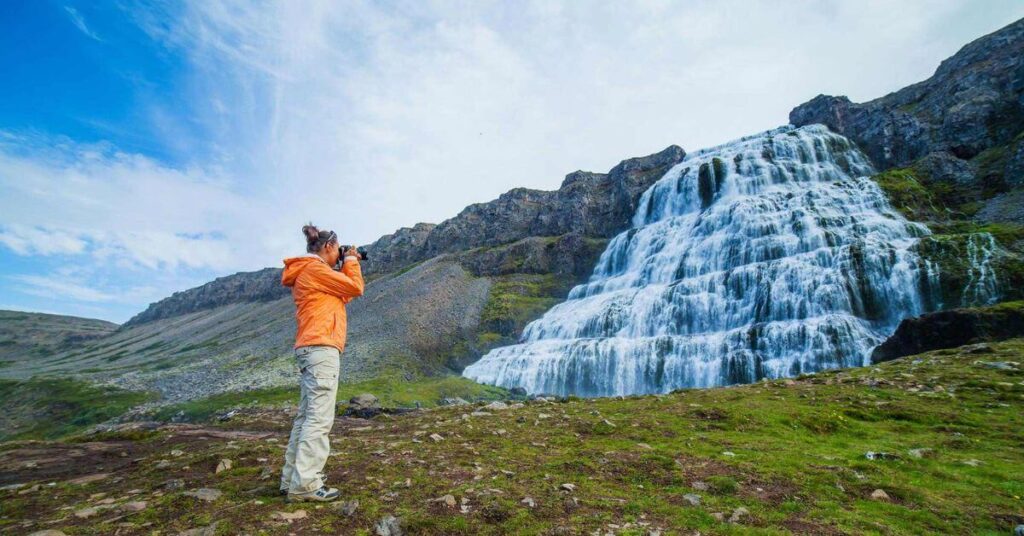
Iceland's nature is stunning but potentially dangerous. Don't be that tourist who needs rescuing.
General Safety:
- Download the 112 Iceland app for emergency assistance
- Check road conditions at road.is before driving ANYWHERE
- Never turn your back on waves at black sand beaches (sneaker waves are deadly)
- Stay on marked paths in geothermal areas (the ground can collapse)
Hiking Safety:
- Register your travel plans at safetravel.is
- Pack emergency food and extra clothes even for “short” hikes
- Hike with a buddy and carry a fully charged phone
- Know how to use emergency coordinates (latitude/longitude)
Weather Awareness:
- Check vedur.is for forecasts but expect rapid changes
- Respect weather warnings they're not suggestions
- Wind in Iceland can (and will) rip car doors off hinges
When planning glacier walks, ice caves, or volcano tours, only book with certified operators. Your Instagram shot isn’t worth risking your life with amateur guides. Even experienced hikers underestimate Iceland’s terrain and weather stay humble and cautious. Strategically planning your trip around the Best Time to Travel to Iceland can make the difference between a good trip and an unforgettable one.
By considering seasonal highlights, weather patterns, and matching your visit with your dream activities whether that’s hiking under the midnight sun or chasing the northern lights you’ll make the most of the Best Time to Travel to Iceland for your personal goals.
From the Blue Lagoon to Þingvellir National Park, Iceland’s top adventure spots offer something magical in every season. But it’s the hidden gems off the beaten path that reveal the country’s wild heart. Your journey deserves careful preparation from packing layers to understanding road safety to match the Best Time to Travel to Iceland based on your style, comfort, and curiosity. Whether summer’s endless light or winter’s frozen wonderland calls to you, Iceland promises awe at every turn. Start planning your adventure today!
FAQs
When is the best time to see the Northern Lights in Iceland?
The Northern Lights are most visible from September to March, with the highest chances during November to February. Dark skies and minimal light pollution are key.
When can I experience the Midnight Sun in Iceland?
From mid-May to late July, Iceland enjoys nearly 24 hours of daylight. Around June 21st, the summer solstice offers the full Midnight Sun effect perfect for late-night hikes and photography.
What’s the ideal season for hiking in Iceland?
Summer (June–August) is the best time for hiking. Trails in Landmannalaugar, Laugavegur, and Þórsmörk are open, with mild temperatures and long daylight hours.
Are hot springs in Iceland available year-round?
Yes! Hot springs like the Blue Lagoon, Secret Lagoon, and natural rivers like Reykjadalur are open all year. Winter adds a magical, steamy backdrop to your soak.
Is it safe to travel in Iceland during winter?
It’s generally safe with preparation. Roads can be icy or closed, so rent a 4WD vehicle, check road.is daily, and avoid remote areas without guidance.
Why travel to Iceland in the shoulder seasons (May or September)?
May and September offer great value fewer crowds, lower prices, and good weather. You’ll also get dramatic lighting for photography and access to top sights without tour bus congestion.

